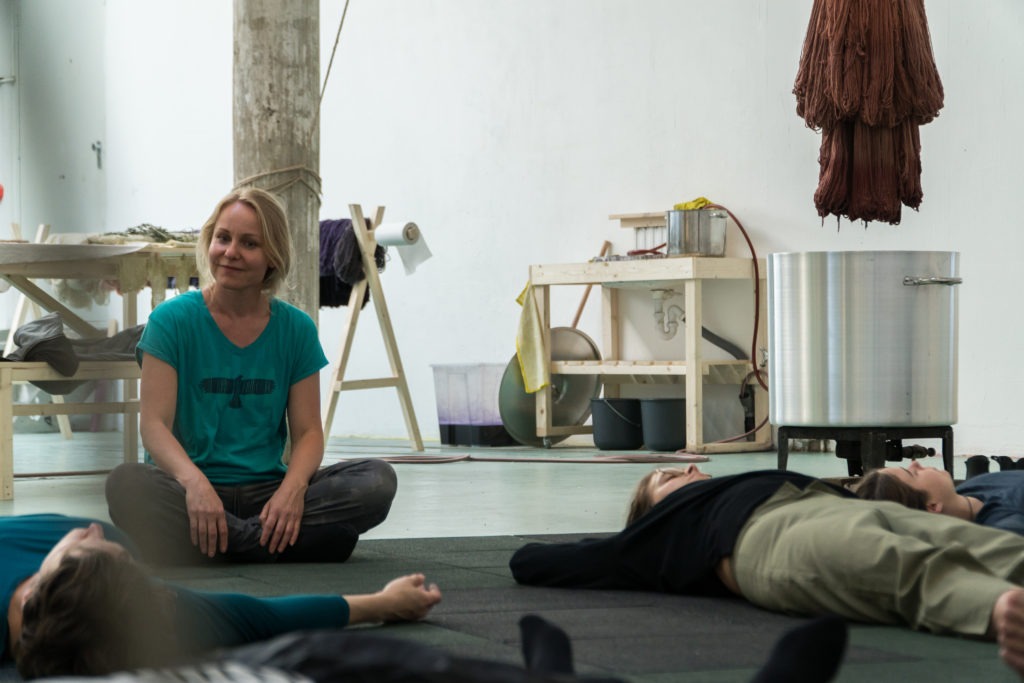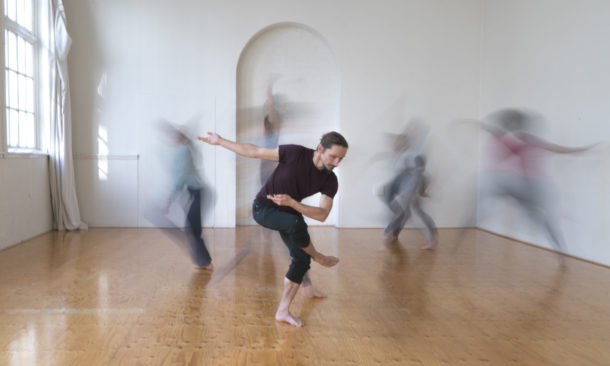A Blog Post by Marieke Delannoy

Embodiment is a trendy word these days. It seems to be used in different contexts and ideas. But what does it mean, and why does it seem to gain importance in the world at this point? I will come back to the last question later in this blog post, but first let me talk about the meaning of embodiment.
First of all embodiment is about the felt sense, the awareness and direct experience of the physical body. And what is even more important: it is a practice! You can learn to develop a closer relationship to your body, be more in touch with your body and yourself, and allow yourself to feel all the sensations and emotions, while working, doing sports, relating to others and the outside world,… actually in everything that we do! And it is a practice that supports our physical, mental and emotional health, and supports a friendly relationship with yourself, with others and the world. For example: because you have a better and more close relationship to your body, you are more aware of boundaries, things that are good/bad for you, how to take better care of yourself, and so on. Because you are able to take good care of yourself, you can also take better care of others and relate to others in a kind and open way. And on top of that your (daily) experience from moment to moment, becomes more intense and you feel more alive. The practice of grounding for me is one the most basic and important embodiment practices. And I will try to explain why, by starting at the beginning of practicing grounding with clients, which is now 20 years ago.
As a very young dance therapy student I wrote a thesis about the importance of grounding practices with psychotic patients. Already then, I was interested in the idea of grounding as a kind of safety net, a baseline both physically as well as mentally, which you can always return to. Actively grounding yourself, to me, was (and still is) something that creates a basic connection with(in) yourself. It connects with a state of just being, and finding and feeling yourself instead of being in your head all the time (which of course psychotic people do all the time). In a way I think that nowadays most of the people are a little bit psychotic. A psychosis is a condition where one loses grip on reality. When we live in our heads all the time, we can also lose the grip on reality, when we start to believe and identify with thoughts. We live in a world where people live in their heads a lot and also computers and phones invite us to constantly think and rethink and be in our heads even more. And then we can lose ourselves in thoughts and forget that we are not our thoughts, thoughts are not facts and are not reality, and in this way we can lose our sense of and grip on reality which is a kind of psychotic experience.
So, I believe it is of great importance to find a way to counterbalance this collective cognitive “psychosis” and find a way to deal with all these mental activities… I think that the need for embodiment practices and finding ways to be in our bodies is crucial and even a life necessity at this point. Embodiment helps us to realize who we are, what our patterns are, and become aware of what we communicate without words, and it supports growth and building kind relationships to others and the world. There is already an expansive growing interest in mindfulness and meditation, which (as a Mindfulness practitioner and teacher myself) I am happy for. But I believe we even need more. I think we need more embodiment practices. Grounding practices are a part of gaining embodiment, and as I said before I believe they are the most basic and important practices of them all.
Grounding practices, from an LBMS perspective, are about recovering our embodied relationship with the earth and gravity. The earth (or surface) supports us, and offers a ‘ground for being and moving’ (as Peggy Hackney writes in her book “Making Connections”). Grounding practices strengthen the connection with the earth, by sensing our weight and yielding it into the surface on the one hand, and feeling the upward, resilient thrust from the earth that supports us on the other hand. This relationship with the ground, precedes our ability to push into the ground and create a stable stance as well as flexible body, and a sense of self presence. It precedes the possibility to activate your weight, stand up for your beliefs and opinions, and feel your own strength.
Being grounded is also an optimal condition for building connections in the body and moving in an economic, effortless way. If we experience more stability in the body, we feel safe and supported to use more mobility too. As a dancer, this experience is so rich and gives me the support to feel free. This idea also supports our dynamic alignment: our bodies are constantly moving, also when we are sitting down, or standing “still”. Our body can adapt much easier to all the changes that are present, and can be mobile because we experience a stable base.
Some people have too much tension in the body and need to learn to yield more and using their body connections to do so, whereas other people are too passive and need to learn to use the upward thrust and also using their body connections to do so. It’s all about finding an adequate balance.
Being grounded provides a fundament for feeling secure and confident. This helps you to feel safe and allow emotions so all that was blocked in the body can start to flow again. Oftentimes when somebody experiences anxiety and/or tension, the attention in the body goes up, and one seems to lose his/her connection with the present moment and the body, and definitely the feeling of being grounded. Regularly practicing grounding, enables you to also use this embodied relationship with the earth in difficult moments, which helps to stabilize yourself and feel more confident to allow sensations in the body without losing yourself.
And to come back to what I wrote before: to stay connected to our sense of self and not loose ourselves in thinking and being in the head, this practice is key!
Grounding and weight sensing are also connected to finding balance in the inner and outer duality of our attention. Grounding supports staying connected to yourself and feel yourself, also when being in relationship with your environment or other people. For me finding this balance has been one of the most important lessons in my life so far. I often had the experience of either being completely outside myself with my attention, for example being fully focused on others or my environment, but then losing my sense of self, not feeling my own feelings anymore. Or on the other hand, being with all of my attention inside, and having difficulty connecting with what is outside of me. Sensing my weight and feeling grounded helped me to balance it out, and still feel myself also when my attention was outside. In this way, I could still be connected with my body, feelings, and needs, and also be open to connect and communicate and being aware of other people’s needs and feelings. I am confident that this too is something that can support a lot of other people!
Last week in an individual session, a client declared “Wow, when I ground myself first, movements become so much easier, more effortless and tension as well as pain in my body seem to disappear magically”. This reminded me of the importance of this basic principle, of reconnecting with my own grounding practices and writing this blog.
In a next blog post I am happy to share one of my favorite grounding practices that I do for myself as well as with clients or students!

